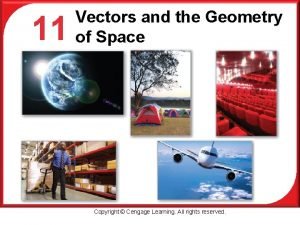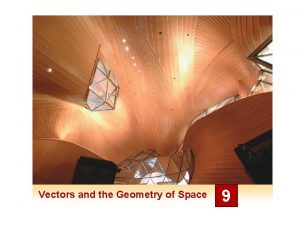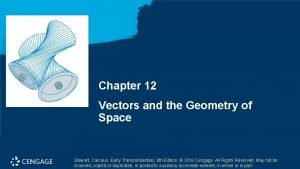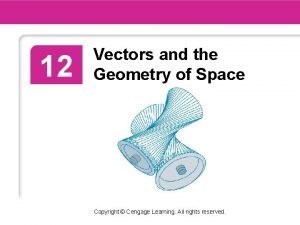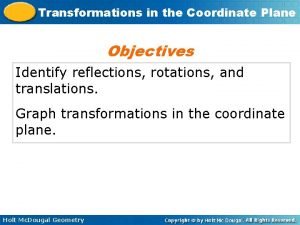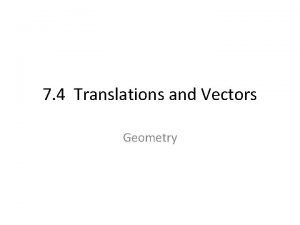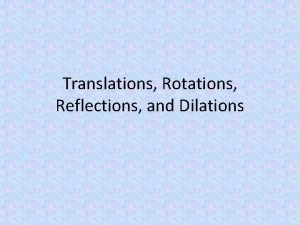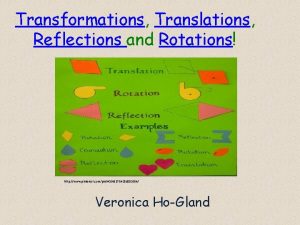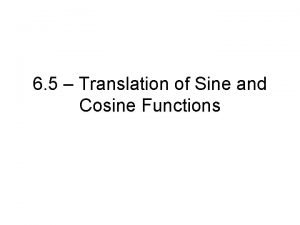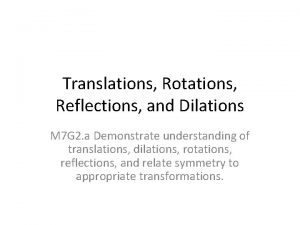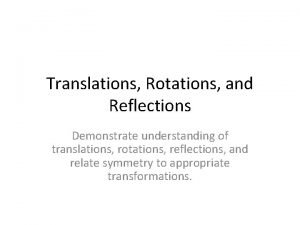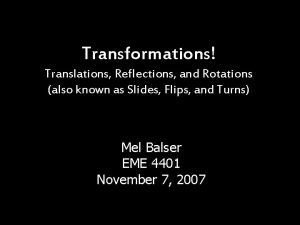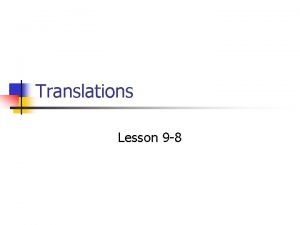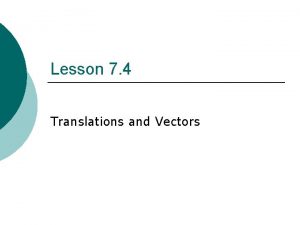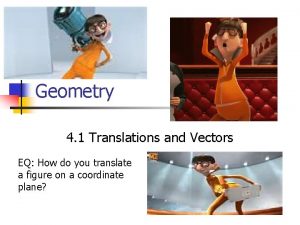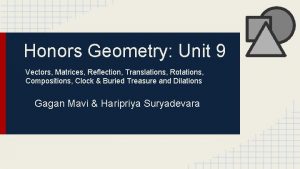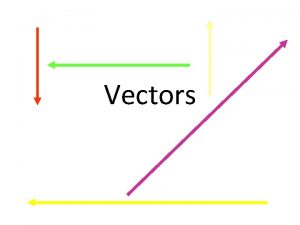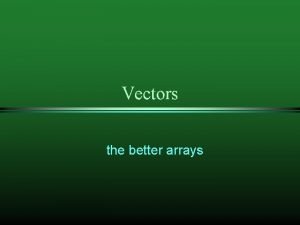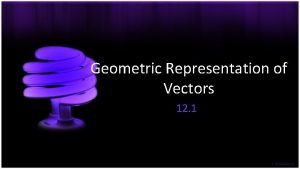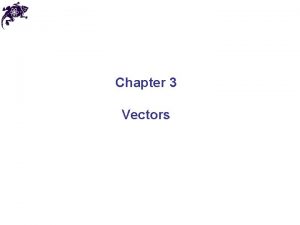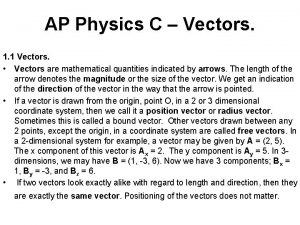7 4 Translations and Vectors Geometry Translation A


















- Slides: 18

7. 4 Translations and Vectors Geometry

Translation A translation is a transformation that maps all points to new points so that the distance from every old point to every new corresponding point is equal.

Translation

Translation Sketch a triangle with vertices A(-1, -3), B(1, -1), and C(-1, 0). Then sketch the image of the triangle after the translation… (x, y) (x – 3, y + 4)

TRANSLATION Sketch a parallelogram with vertices R(-4, -1), S(-2, 0), T(-1, 3), U(-3, 2). Then sketch the image of the parallelogram after translation… (x, y) (x + 4, y – 2)

Translation Triangle ABC Triangle A’B’C’ by a translation defined by (x, y) (x – 5, y). The coordinates of the vertices of triangle ABC are A(7, 4), B(-1, -1), and C(3, -5). What are the coordinates of the vertices of triangle A’B’C’?

Vectors A vector is a quantity that has both direction and magnitude (size), and is represented by an arrow drawn between two points.

Vector • Initial Point – Starting Point • Terminal Point – Ending Point Naming a vector

Component Form The component form of a vector combines the horizontal and vertical components. Let’s take a look at an example….


Identifying Vector Components The initial point of a vector is V(-2, 3) and the terminal point is W(-4, -7). Name the vector and write its component parts.

Identifying Vector Components The initial point of a vector is E(2, -6) and the terminal point is F(2, -9). Name the vector and write its component parts.

Translation Using Vectors The component form of vector RS is <2, -3>. Use vector RS to translate the quadrilateral whose vertices are G(-3, 5), H(0, 3), J(1, 3), and K(3, -2).

Translation Using Vectors The component form of vector MN is <3, 1>. Use vector MN to translate the triangle whose vertices are R(0, 4), S(3, 1), and T(4, -2).

Translation Using Vectors The component form of GH is <4, 2>. Use GH to translate the triangle whose vertices are (3, -1), B(1, 1), and C(3, 5).

Finding Vectors In the diagram, ABC maps onto A’B’C’ by a translation. Write the component form of the vector that can be used to describe the translation.

Finding Vectors In the diagram, EFGH maps onto E’F’G’H’ by a translation. Write the component form of the vector that can be used to describe the translation.

Finding Vectors In the diagram, ABC maps onto A’B’C’ by a translation. Write the component form of the vector that can be used to describe the translation.
 Vectors and the geometry of space
Vectors and the geometry of space Dot product
Dot product Chapter 12 vectors and the geometry of space
Chapter 12 vectors and the geometry of space Chapter 12 vectors and the geometry of space solutions
Chapter 12 vectors and the geometry of space solutions Vectors and the geometry of space
Vectors and the geometry of space Electron geometry and molecular geometry
Electron geometry and molecular geometry Comunicative translation
Comunicative translation Transformations of linear functions
Transformations of linear functions 4 electron domains 2 lone pairs
4 electron domains 2 lone pairs The basis of the vsepr model of molecular bonding is _____.
The basis of the vsepr model of molecular bonding is _____. Translation rule geometry
Translation rule geometry Translation definition geometry
Translation definition geometry Translations and dilations
Translations and dilations Translation reflection rotation
Translation reflection rotation Abowd and beale model
Abowd and beale model Horizontal phase shift
Horizontal phase shift Rotation reflection translation dilation
Rotation reflection translation dilation Reflections and translations
Reflections and translations Translations and reflections
Translations and reflections
